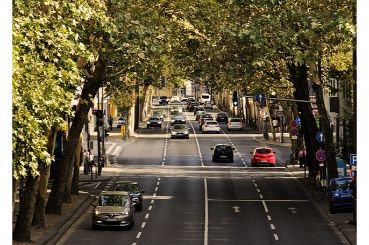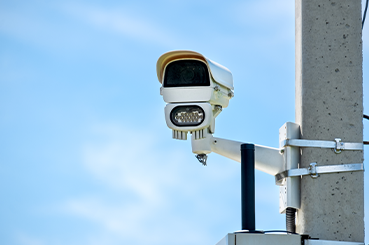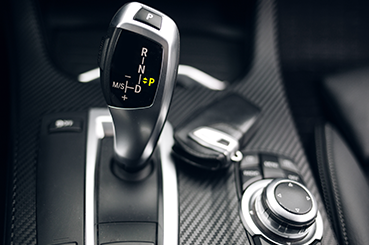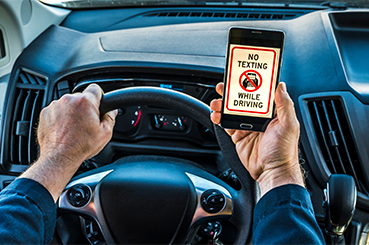Learning to drive on UK roads can feel overwhelming with so many rules to remember. Road markings are one of the most important things to understand, acting like a visual language that tells drivers, cyclists, and pedestrians what they need to know.
These painted lines and symbols are essential for keeping our roads safe and traffic moving smoothly. They work alongside road signs to show you where you can overtake, where to park, and how to navigate junctions safely.
Getting to grips with road markings helps prevent accidents and makes you a more confident driver.
Why Road Markings Matter
Road markings aren’t just guidance, they’re legally binding under the Highway Code. Ignore them and you could face fines, penalty points, or worse. Whether it’s white lines or yellow lines, each marking has a specific meaning you need to follow.
You’ll see different markings depending on where you’re driving. Understanding what they mean and where you’ll find them keeps you on the right side of the law and helps keep everyone safe on the roads.
White Lines Along the Road

Solid White Lines
Solid white lines serve as clear boundaries that shouldn’t be crossed except in specific circumstances. These lines separate lanes of traffic moving in the same direction and indicate where overtaking is prohibited.
What happens if I cross a solid white line?
Crossing a solid white line is generally prohibited and can result in a fine and three penalty points on your licence.
However, there are exceptions – you may cross a solid white line to enter or exit a side road, avoid a stationary vehicle, or pass a cyclist, horse, or road maintenance vehicle travelling at less than 10mph. The key is ensuring you can do so safely without endangering other road users.
Broken White Lines
Broken white lines, also known as dashed lines, mark the centre of the road and separate opposing traffic flows. The length and spacing of these dashes provide important information about road conditions ahead.
Can I overtake when there are broken white lines?
Yes, you may overtake when broken white lines are present, provided it’s safe to do so. Longer dashes with shorter gaps indicate hazards ahead, such as bends or hills, where extra caution is required.
Always ensure you have clear visibility, sufficient space, and time to complete the manoeuvre safely before returning to your side of the road.


Double White Lines
Double white lines consist of two parallel lines and represent the most restrictive road marking for overtaking. The solid line nearest to you determines whether you can cross.
Can I overtake on double white lines?
If the solid line is on your side, you must not cross it to overtake except for the same exceptions that apply to single solid lines (stationary vehicles, cyclists, horses, or slow-moving road maintenance vehicles).
If the broken line is on your side and the solid line is on the opposite side, you may cross to overtake if safe, but you must return before the lines become solid on your side.
White Zigzag Lines
White zigzag lines appear at pedestrian crossings and serve as a crucial safety feature to maintain clear sight lines between drivers and pedestrians.
What happens if I park on white zigzag lines?
Parking on white zigzag lines is strictly prohibited and carries a penalty and three penalty points. These markings extend the no-parking zone around pedestrian crossings to ensure visibility isn’t obscured.
You also cannot overtake the leading vehicle or stop to pick up or drop off passengers within the zigzag area.

Other Variations
Road markings include several other white line variations designed to enhance safety. Wider white lines often appear when approaching junctions, roundabouts, or other hazards, serving as a visual warning to reduce speed and increase awareness.
Lane arrows provide clear guidance about permitted directions of travel, while additional markings such as “SLOW” or “STOP” painted on the carriageway reinforce regulatory signs.
White Lines Across the Road

Stop Lines
Stop lines are solid white lines painted across the carriageway at junctions controlled by “STOP” signs or traffic lights. These thick white lines mark the precise point where vehicles must come to a complete halt.
What happens if I stop beyond the Stop line?
Stopping beyond a stop line can result in a fine and three penalty points for failing to comply with traffic signals or signs. At traffic lights, stopping beyond the line may trigger red light cameras.
If you inadvertently cross the line, don’t reverse back as this could cause confusion for other road users – simply remain stationary until it’s safe and legal to proceed.
Give Way Lines
Give way lines consist of broken white lines across the carriageway, typically accompanied by triangular road markings and “GIVE WAY” signs. These indicate where you must yield to traffic on the major road.
How do these differ from Stop lines?
Unlike stop lines, give way lines don’t require you to come to a complete halt if the way is clear. You must slow down, assess the traffic situation, and only proceed when safe to do so.
However, you must stop if necessary to avoid conflicting with traffic that has the right of way. The broken nature of the line reflects this conditional requirement compared to the absolute stop requirement of solid stop lines.
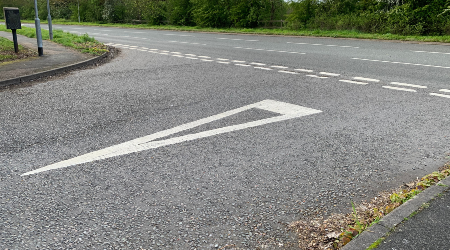
Other Transverse Lines
Advanced Stop Lines for cyclists create a designated waiting area at traffic lights, positioned ahead of the main stop line. Motorists must not enter this area when the lights are red, allowing cyclists to position themselves safely ahead of traffic.
Hatch markings appear as diagonal white lines, often near roundabouts or complex junctions. These areas separate traffic flows and should only be entered if necessary and if your vehicle can clear the area without stopping. Some hatch markings are bordered by solid lines (must not enter unless emergency), whilst others have broken line borders (may enter if safe).
Yellow Lines Along the Road

Single Yellow Lines
Single yellow lines indicate parking restrictions that apply during specific times, clearly displayed on nearby signs. These restrictions help maintain traffic flow during busy periods whilst allowing parking when demand is lower.
Can I park on a single yellow line at night?
Single yellow line parking depends entirely on the times displayed on the accompanying signs. Many single yellow lines have restrictions during daytime hours (typically 8am-6pm Monday to Saturday) but permit parking in the evenings, overnight, and on Sundays.
However, some areas have 24-hour restrictions or different time patterns, so always check the signs carefully. Parking outside the restricted hours is perfectly legal.
Double Yellow Lines
Double yellow lines indicate no parking at any time, providing the strongest parking restriction available. These are used on main roads, near junctions, and in other locations where parked vehicles would cause obstruction or safety hazards.
What happens if I park on double yellow lines?
Double yellow line parking typically results in a Penalty Charge Notice (PCN), depending on the local authority and location severity. In London and other major cities, fines can be much higher.
You may stop briefly to load or unload goods if no loading restrictions apply, but the vehicle must not be left unattended.

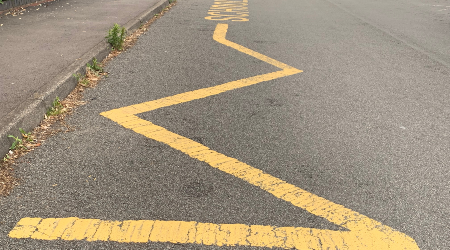
Yellow Zigzag Lines
Yellow zigzag lines appear outside schools and serve as a crucial child safety measure. These markings create clear zones around school entrances during peak times.
What happens if I park on yellow zigzag lines?
Parking on yellow zigzag lines outside schools can result in a fine and three penalty points on your licence. The restrictions typically apply during school hours (usually 8-9am and 3-4pm on school days), but check local signage for specific times.
Even brief stops to drop off children are prohibited – use designated parking areas nearby instead.
Special Markings and Exceptions
Modern road networks feature numerous specialised markings designed for specific road users and situations.
- Bus lanes are marked with thick white lines and “BUS LANE” text, often accompanied by pictograms showing permitted vehicles (buses, taxis, motorcycles, or bicycles, depending on local regulations).
- Cycle lanes use similar principles but are typically narrower and marked with bicycle symbols.
- Road works present unique challenges as temporary markings may override permanent ones. Temporary yellow lines, cones, and signs take precedence during construction periods, and normal parking rules may be suspended or altered. Always observe temporary signage carefully, as penalties for ignoring road work restrictions can be severe.
- Loading bays, disabled parking spaces, and taxi ranks each have distinctive markings and specific enforcement rules. Loading bays typically use broken yellow lines with time restrictions, disabled bays feature wheelchair symbols and require valid blue badges, whilst taxi ranks are clearly marked and restricted to licensed hackney carriages during operating hours.
- Box Junctions have yellow criss-cross lines with signify an area where stationary vehicles are not allowed. This is designed to keep traffic moving and leaves areas free, especially for emergency services.
How to Read Road Markings Effectively
Road markings form an essential part of the UK’s traffic management system, providing clear guidance for safe and legal driving. Effective road marking interpretation requires constant attention and forward planning.
- Stay alert and plan ahead – Scan the road surface regularly, not just looking at signs and signals. Road markings often provide the first indication of changing conditions, lane restrictions, or hazards ahead.
- Recognising markings in low visibility – Conditions such as rain, fog, or darkness requires extra attention. Reflective studs and cats’ eyes complement painted lines, with different colours indicating various road features: white for lane markings, red for the left carriageway edge, and amber for central reservations. In wet conditions, painted lines can become slippery, so adjust your driving accordingly.
- Common mistakes to avoid – Don’t park on any form of yellow line without checking restriction times, cross solid white lines unnecessarily, or ignore zigzag markings around pedestrian crossings and schools.
- During driving tests – Examiners pay particular attention to how candidates respond to road markings. Demonstrate awareness by adjusting your speed and position appropriately when approaching different markings, and ensure you understand the legal requirements rather than just following other traffic.
Master Road Markings: Your Guide to Driving Safely and Legally
Understanding the distinction between different white and yellow lines, their specific restrictions, and the penalties for non-compliance helps ensure you remain a responsible and law-abiding motorist.
Road markings work alongside traffic signs and signals to create a comprehensive communication system between road authorities and drivers. By taking time to understand these markings properly, you contribute to safer roads for everyone whilst avoiding unnecessary fines and penalty points.
For more detailed information about specific driving situations, vehicle maintenance tips, and motoring advice, explore our other helpful guides here at Stoneacre. Our comprehensive resources are designed to keep you informed, safe, and confident on the road.
We recommend that you always keep up to date with new rules and regulations on the road. The official documentation on road markings can be found on the government website.


